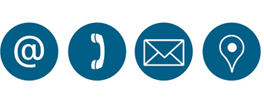Installing an Automated External Defibrillator (AED) cabinet in hotels provides numerous benefits, enhancing safety for both guests and staff. Here are some key advantages:
1. Life-Saving Potential
AEDs can significantly increase survival rates for cardiac arrest victims. Quick access to an AED can be the difference between life and death.
2. Immediate Response Capability
Having an AED on-site allows for a rapid response in emergencies, crucial in cardiac incidents where every second counts.
3. Increased Guest and Staff Safety
The presence of an AED demonstrates a commitment to health and safety, reassuring guests and staff that their well-being is a priority.
4. Compliance with Regulations
Many regions and organizations require AEDs in public spaces, including hotels. Installing an AED cabinet can help ensure compliance with these regulations.
5. Staff Training Opportunities
Providing AEDs encourages training programs for staff in CPR and AED use, enhancing overall emergency preparedness.
6. Enhanced Reputation
Hotels that prioritize safety and emergency preparedness can improve their reputation, attracting more guests who value health and safety.
7. Cost-Effectiveness
While there is an upfront cost, the potential savings in healthcare costs and liability claims can outweigh the investment if a life is saved.
8. Community Support
Having an AED can also benefit the local community, as it can be used by first responders or bystanders in emergencies outside the hotel.
9. Emergency Protocol Development
Installing an AED promotes the development of comprehensive emergency response plans, which can enhance overall safety culture within the hotel.
10. Peace of Mind
Knowing that an AED is readily available can provide peace of mind to guests and staff, contributing to a more relaxed environment.
Implementation Tips:
Strategic Placement: Position the AED cabinet in a highly visible and accessible location.
Clear Signage: Use clear signs to indicate the location of the AED and provide instructions on how to use it.
Regular Maintenance: Schedule regular checks to ensure the AED is functional and that supplies are up-to-date.
By investing in an AED cabinet, hotels can enhance safety measures and be better prepared for cardiac emergencies, ultimately fostering a safer environment for everyone. If you need further details or guidance on specific models, just let me know!
1. AED Device
The main defibrillator unit, which is designed to analyze heart rhythms and deliver an electric shock if necessary.
2. Adult and Pediatric Pads
Electrodes that attach to the patient’s chest. Many AEDs come with both adult and pediatric pads, or pads that can be used for both.
3. User Instructions
Clear, step-by-step instructions for operating the AED, often available in multiple languages. Some cabinets also include visual guides.
4. CPR Mask
A barrier device to provide rescue breaths safely during CPR.
5. Gloves
Disposable latex or nitrile gloves to protect the responder during a medical emergency.
6. Scissors
For cutting clothing to access the chest if necessary.
7. Alcohol Wipes
For cleaning the area where the pads will be placed, ensuring good adhesion.
8. Emergency Contact Information
Instructions on who to contact for emergency services and internal emergency protocols.
9. Signage
Clear signs indicating the location of the cabinet and instructions for use, often featuring bright colors for visibility.
10. Battery and Maintenance Log
Some cabinets include a log to track the maintenance and checks of the AED, including battery replacement and pad expiration dates.
Considerations for Installation:
Accessibility: Ensure the cabinet is easily accessible to both staff and guests.
Visibility: Use bright colors and clear signage to mark the location of the AED cabinet.
Regular Checks: Implement a routine for checking the contents of the cabinet to ensure everything is stocked and functional
Installing bleeding kits in hotels is a proactive step toward ensuring guest and staff safety. Here are some key considerations and steps for implementation:
1. Assess Risk Areas
Identify high-risk areas such as kitchens, pools, gyms, and event spaces where injuries are more likely to occur.
2. Choose Appropriate Kits
Select bleeding kits that are suitable for your hotel's needs. Consider including items like tourniquets, sterile dressings, and gloves.
3. Strategic Placement
Position kits in easily accessible areas, clearly marked for visibility. Consider locations like:
Reception desks
Housekeeping areas
Employee break rooms
Near first aid stations
4. Training Staff
Provide training for staff on how to use the kits effectively. This can include:
Basic first aid training. We provide free CPR training






